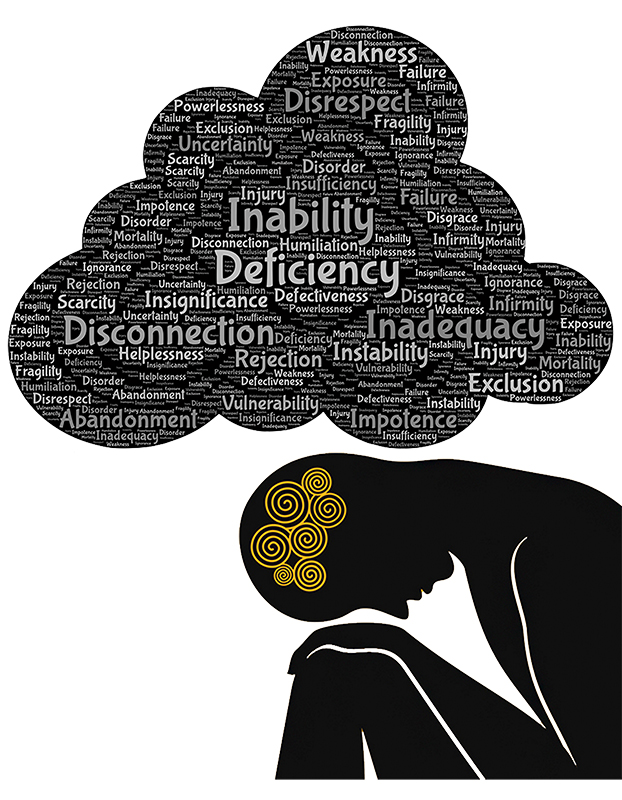Understanding Anxiety
Anxiety, especially in young children and teenagers, is more prevalent in our society than generally accepted. Here we present, based upon conversation with Dr. Bijay Gyawali, the best ways to deal with it.

Before contemplating what anxiety is, we need to understand that the human brain has a reflex phenomena ‑‑“Fight or Flight.” This reflex generates natural responses to various stimulants. For example, getting startled at loud noises, shredding tear when hurt are examples of such responses. However, there are times when the responses are artificial or beyond the normally accepted levels. The inability to respond to certain stimuli naturally or within acceptable limits can be called anxiety. It is a very vague subject, and there are many other sub-cases under it.
In Nepal, teens tend to face one of two cases: social anxiety or General Anxiety Disorder (GAD). The more serious cases are termed as “mutism”--which means that the teens exclude themselves from the society completely. Fear of socializing, and keeping oneself separate from social crowds can be symptoms of anxiety.
Determining whether children or teens have anxiety or not
Parents need to understand is that anxiety and depression do not differentiate between children, teens or adults. They can affect anyone at any age. People tend to have the misconception that children and teens aren’t affected by anxiety and depression. So it is imperative that as a parent one should be aware that anxiety can affect children as well.
There are a few symptoms that can be noted and are visible:
- Emotional: Irritability, unexplained anger, and fits of rage.
- Social: Isolating oneself (for example, staying alone in the room for a long period of time); unwilling to socialize with guests and new people; losing social circles and bearing the feeling of losing friends. Losing interest in peer groups is a major symptom children and teens that suffer from anxiety.
- Physical: Increasing headaches and migraine; instant fatigue, even with very little physical exertion; palpitations, which is often mistaken for heart problems; sleep disturbance, usually manifested as inability to sleep, or sleeping only for a few hours.
With young children, wetting the bed can also be counted as a symptom of his/her anxiety. Apart from that, low school performance usually manifested as gradual decline in grades as the classes progress can also be signs of anxiety.
How should a parent comfort his/her child with anxiety?
Parents should know the fact that the feelings of anxiety in adults and in kids are the same. Children and teens become stressed and anxious the same way as adults.
Parents should also not forget their child’s capacity for resiliency. Everyone has a certain limit, on how much he or she can cope with difficult situations. The limit differs from person to person. In Nepalese education system, children are generally sent to schools not to learn new things but to pass their exams. Hence the first thing that a child should be taught is the means to build his/her resiliency, and how to cope with even the most serious situations, such as exams.
Furthermore, parents’ own coping strategies also play a significant part in handling and comforting kids with anxiety. Usually, parents and adults don’t let their children speak up during important household discussions. Treating children as someone unaware and unable to understand weakens their coping strengths, which results in their being irritated and stressed out even over small things. Reevaluating parenting techniques, skills, and strategies can limit any unintended anxiety triggers in children and teenagers.
How to handle panic and anxiety attacks?
The symptoms of anxiety can differ depending on the type of anxiety. In general, anxiety differs from panic attacks in that it gradually increases rather than subsides. Patients are in better position to understand what triggers their anxiety.
- It should be made clear that anxiety is a natural response of the body.
- In case of anxiety attacks itself,
(i) Symptomatic care: Breathing exercises; drinking cold water; and in serious cases, medication.
(ii) Problematic care: Focusing on anxiety triggers.
Long term impacts
In the case of teenagers, the major impact anxiety has is on their academic performance. Moreover, it can also disturb their normal social interactions. Post Traumatic Stress Disorder (PTSD) which is stress relating to past experiences and memories is also a sign of anxiety.
The Nepal Police releases an annual survey of the number of suicide cases. Comparing the data from last year (150) to this year alone (250), shows an increase in the number of suicides mainly among children below the age of 16. Failure to recognize and deal with anxiety in children in a timely manner is a prime reason for the growth in suicide and suicide attempts.
For example, children’s unwillingness to go to school can be because of various reasons. Yet it is common for parents to try to convince or even force children to stay in school. Unknown to the parents, children may be dealing with bullying , corporal punishment or inability to understand concepts that they feel are beyond their mental capabilities. Parents rarely try to understand the real reasons for their children’s behaviors. After a certain number of days, children eventually stop crying or throwing tantrums, and parents mistakenly take that as a sign that the children are now used to being at school. And children also realize that crying isn’t going to help them solve their situations. The outlet of these feelings of helplessness unfortunately manifest in the form of increasing prevalence of suicide attempts, drug habits, smoking, and drinking.
The current situation in Nepal should be taken as a national crises, and greater focus should be put on education and changing outdated parenting practices to mitigate the long-term impact of anxiety on young children and teenagers.


